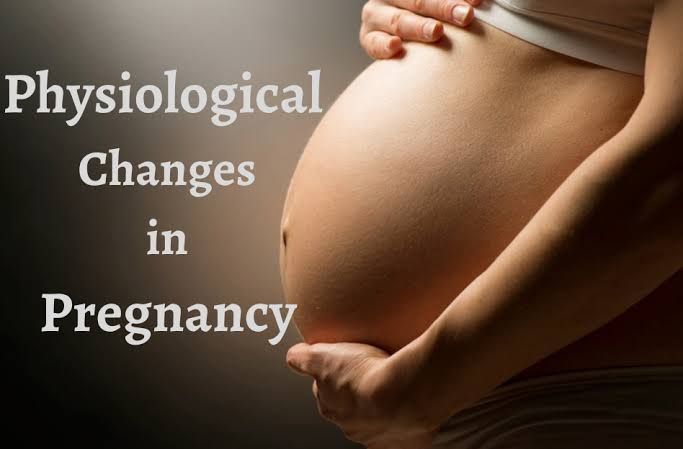
Pregnancy induces a wide array of physiological changes in a woman’s body to support the developing fetus. These changes can be categorized into several systems, including genital, breast, cardiovascular, skin, urinary, endocrine and metabolic, as well as gastrointestinal and respiratory systems.
(a) Genital Changes During Pregnancy
During pregnancy, significant changes occur in the female reproductive system.
Upper and Lower Uterine Segments
The uterus undergoes considerable transformation throughout pregnancy. The upper uterine segment (fundus) becomes more muscular and is responsible for the majority of the uterine contractions during labor. It expands significantly to accommodate the growing fetus. The lower uterine segment (cervix) also changes but in different ways; it becomes softer and more pliable due to hormonal influences, particularly from progesterone. This softening helps facilitate childbirth by allowing the cervix to dilate during labor.
In summary:
- Upper Uterine Segment: Increases in muscle mass and size; responsible for contractions.
- Lower Uterine Segment: Softens and prepares for dilation during labor.
(b) Breast Changes During Pregnancy
Breast tissue undergoes extensive changes during pregnancy due to hormonal fluctuations:
- Hormonal Influence: Increased levels of estrogen and progesterone stimulate breast development.
- Glandular Tissue Growth: There is an increase in glandular tissue to prepare for lactation.
- Nipple Changes: The nipples become larger and darker, with increased pigmentation.
- Montgomery Glands: These glands become more prominent, providing lubrication for breastfeeding.
Overall, these changes prepare the breasts for milk production and feeding after childbirth.
(c) Cardiovascular Changes During Pregnancy
The cardiovascular system adapts significantly during pregnancy:
- Increased Blood Volume: Blood volume increases by approximately 30-50% to supply oxygen and nutrients to both mother and fetus.
- Cardiac Output: Cardiac output rises due to increased stroke volume and heart rate.
- Blood Pressure Changes: Initially may decrease due to vasodilation but typically returns to pre-pregnancy levels later in gestation.
- Hemodynamic Changes: There is an increase in blood flow to the uterus, kidneys, and breasts.
These adaptations are crucial for maintaining adequate perfusion of maternal organs and fetal development.
(d) Skin Changes (“Cutaneous Changes”)
Pregnancy induces various skin changes due to hormonal shifts:
- Chloasma (Melasma): Dark patches may appear on the face due to increased melanin production.
- Striae Gravidarum (Stretch Marks): As the skin stretches over the growing abdomen, stretch marks may develop.
- Vascular Changes: Increased blood flow can lead to spider veins or varicosities.
- Linea Nigra: A dark line may appear on the abdomen as a result of hormonal influences.
These skin changes are generally temporary but can vary widely among individuals.
(e) Urinary System Changes
The urinary system experiences several adaptations during pregnancy:
- Increased Renal Blood Flow: Blood flow to the kidneys increases by about 50%, enhancing glomerular filtration rate (GFR).
- Hormonal Effects: Hormones like progesterone cause relaxation of smooth muscle in the urinary tract, which can lead to urinary stasis.
- Frequency of Urination: Increased frequency occurs due to pressure from the enlarging uterus on the bladder.
- Risk of Urinary Tract Infections (UTIs): Due to anatomical changes and urinary stasis.
These adaptations help manage waste products from both mother and fetus while accommodating physiological demands.
(f) Endocrine and Metabolic Changes
Pregnancy triggers significant endocrine alterations:
- Hormonal Production: The placenta produces hormones such as human chorionic gonadotropin (hCG), estrogen, progesterone, and placental lactogen that regulate metabolism and maintain pregnancy.
- Metabolic Rate Increase: Basal metabolic rate increases by 15-20% due to heightened energy demands from fetal growth.
- Insulin Resistance: There is often an increase in insulin resistance later in pregnancy as a result of placental hormones affecting glucose metabolism.
These endocrine adjustments are vital for supporting fetal development while ensuring maternal health.
(g) Other Systems (Gastrointestinal & Respiratory)
Gastrointestinal System
Changes include:
- Nausea/Vomiting: Commonly known as morning sickness due to hormonal fluctuations.
- Altered Motility: Slower gastrointestinal motility caused by progesterone leads to constipation but can also contribute to gastroesophageal reflux disease (GERD).
- Increased Appetite: Many women experience increased appetite as energy needs rise.
Respiratory System
Changes involve:
- Increased Tidal Volume: To meet increased oxygen demands; this results from elevated levels of progesterone stimulating respiratory centers in the brain.
- Diaphragmatic Breathing Shift: As the uterus expands, abdominal breathing transitions more towards diaphragmatic breathing.
- Potential Shortness of Breath: As pregnancy progresses, especially in late stages when lung capacity may be compromised by upward pressure from the diaphragm.
These adaptations ensure that both mother and fetus receive adequate oxygen throughout pregnancy.






